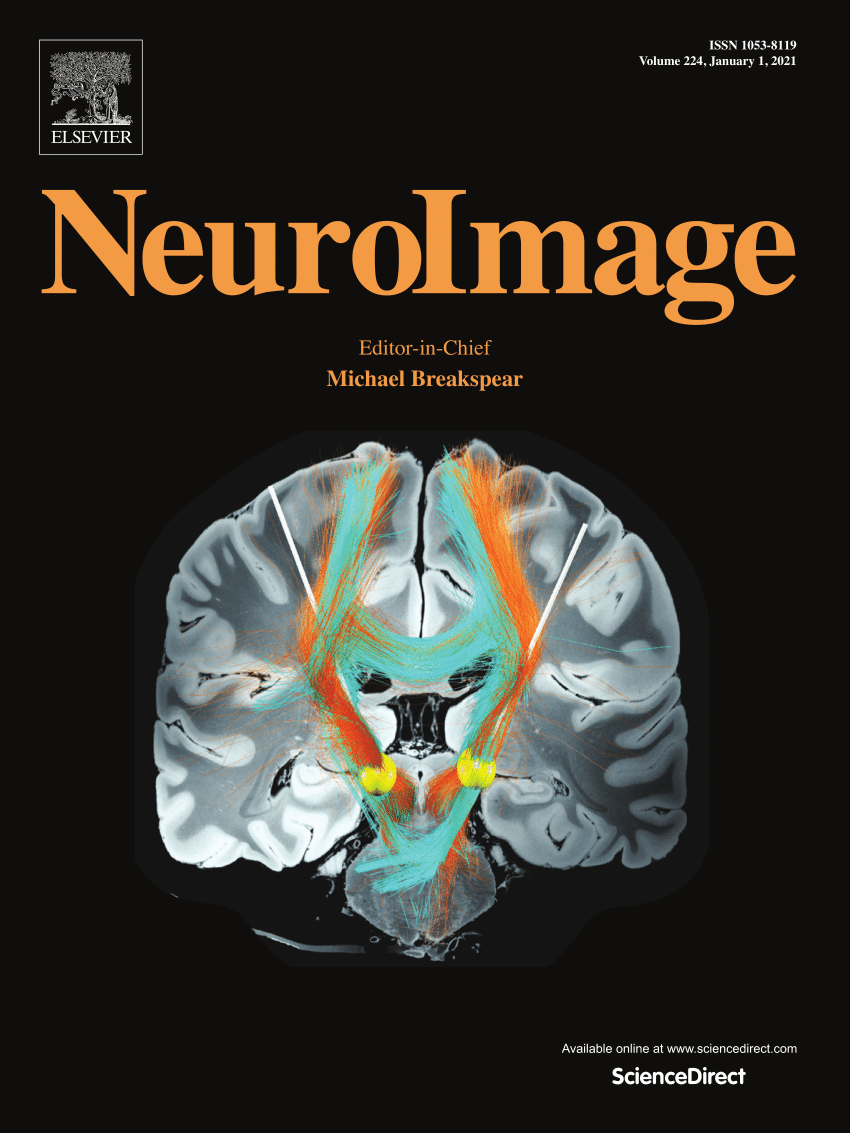Action expectancy modulates activity in the mirror neuron system and mentalizing system
IF 4.7
2区 医学
Q1 NEUROIMAGING
引用次数: 0
Abstract
Action understanding involves two distinct processing levels that engage separate neural mechanisms: perception of concrete kinematic information and recognition of abstract action intentions. The mirror neuron system and the mentalizing system have both been linked to concrete action and abstract information processing, but their specific roles remain debatable. Here, we conducted a functional magnetic resonance imaging study with 26 participants who passively observed expected and unexpected actions. We performed whole-brain activation, region of interest, and effective connectivity analyses to investigate the neural correlates of these actions. Whole-brain activation analyses revealed that expected actions were associated with increased activation in the left medial superior frontal gyrus, while unexpected actions were linked to heightened activity in the left supramarginal gyrus, left superior parietal lobule, right inferior temporal gyrus, and left middle frontal gyrus. Region of interest analyses demonstrated that the left ventral premotor cortex exhibited greater activation during the observation of expected actions compared to unexpected actions, while the left inferior frontal gyrus, left superior parietal lobule, and left precuneus showed stronger activation during the observation of unexpected actions. Effective connectivity was observed between the left ventral premotor cortex and the left angular gyrus, left intraparietal sulcus, left dorsal premotor cortex, and left ventromedial prefrontal cortex with the middle frontal gyrus when observing unexpected, but not expected, actions. These findings suggest that expected actions are primarily processed by the mirror neuron system, whereas unexpected actions engage both the mirror neuron system and the mentalizing system, with these systems playing complementary roles in the understanding of unexpected actions.
行动预期调节镜像神经元系统和心智系统的活动
动作理解涉及两个不同的处理层次,分别涉及不同的神经机制:对具体运动信息的感知和对抽象动作意图的识别。镜像神经元系统和心智化系统都与具体动作和抽象信息处理有关,但它们的具体作用仍有争议。在此,我们对 26 名被动观察预期和意外动作的参与者进行了功能磁共振成像研究。我们进行了全脑激活、感兴趣区和有效连接分析,以研究这些动作的神经相关性。全脑激活分析表明,预期动作与左侧内侧额上回的激活增加有关,而意外动作则与左侧边际上回、左侧顶叶上小叶、右侧颞下回和左侧额中回的活动增强有关。兴趣区分析表明,与意外动作相比,在观察预期动作时,左侧腹侧运动前皮层表现出更强的激活,而在观察意外动作时,左侧额叶下回、左侧顶叶上小叶和左侧楔前叶表现出更强的激活。在观察意外动作而非预期动作时,左侧腹侧前运动皮层与左侧角回、左侧顶内沟、左侧背侧前运动皮层以及左侧腹内侧前额叶皮层与额叶中回之间存在有效连接。这些研究结果表明,预期动作主要由镜像神经元系统处理,而意外动作则同时涉及镜像神经元系统和心智化系统,这两个系统在理解意外动作时起着互补作用。
本文章由计算机程序翻译,如有差异,请以英文原文为准。
求助全文
约1分钟内获得全文
求助全文
来源期刊

NeuroImage
医学-核医学
CiteScore
11.30
自引率
10.50%
发文量
809
审稿时长
63 days
期刊介绍:
NeuroImage, a Journal of Brain Function provides a vehicle for communicating important advances in acquiring, analyzing, and modelling neuroimaging data and in applying these techniques to the study of structure-function and brain-behavior relationships. Though the emphasis is on the macroscopic level of human brain organization, meso-and microscopic neuroimaging across all species will be considered if informative for understanding the aforementioned relationships.
 求助内容:
求助内容: 应助结果提醒方式:
应助结果提醒方式:


